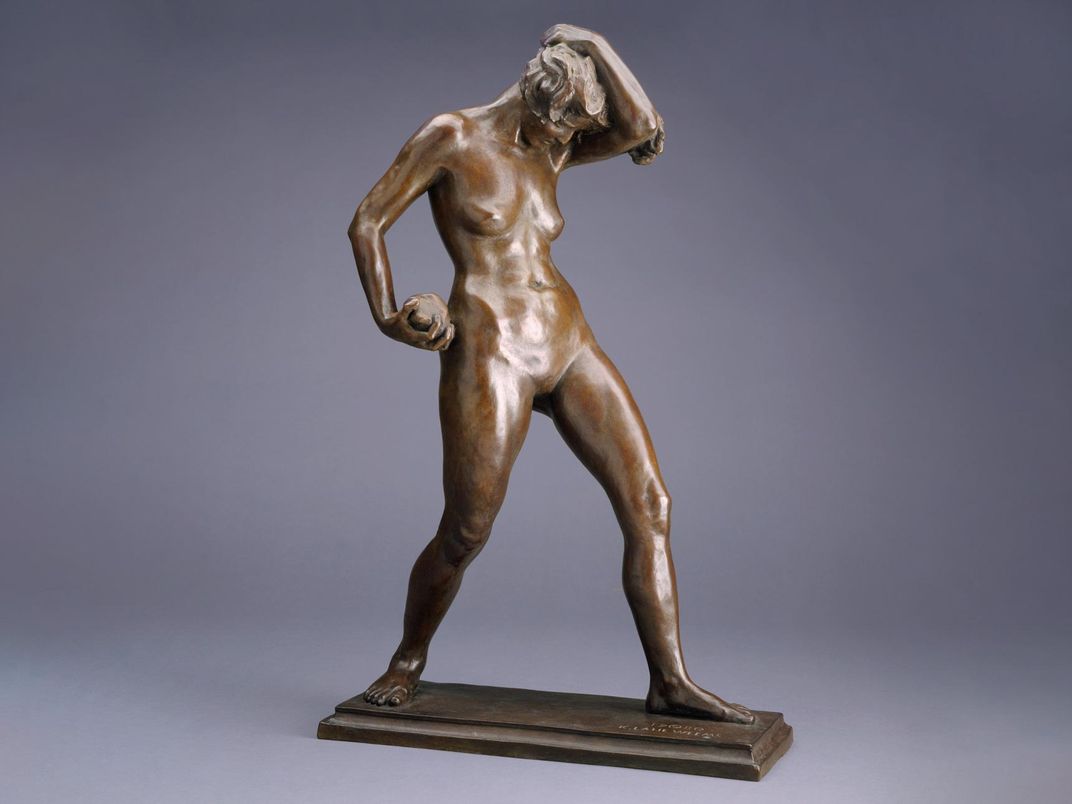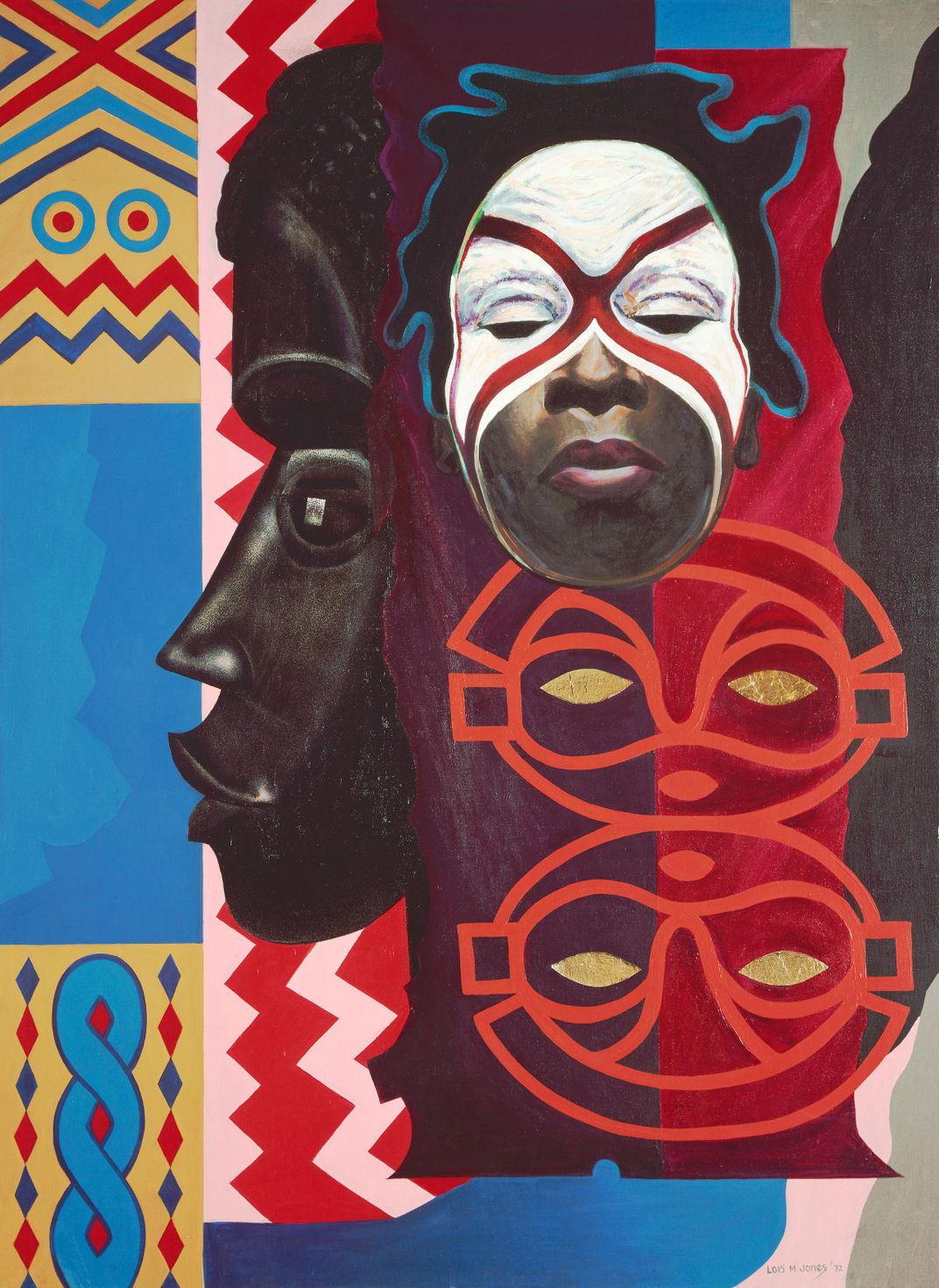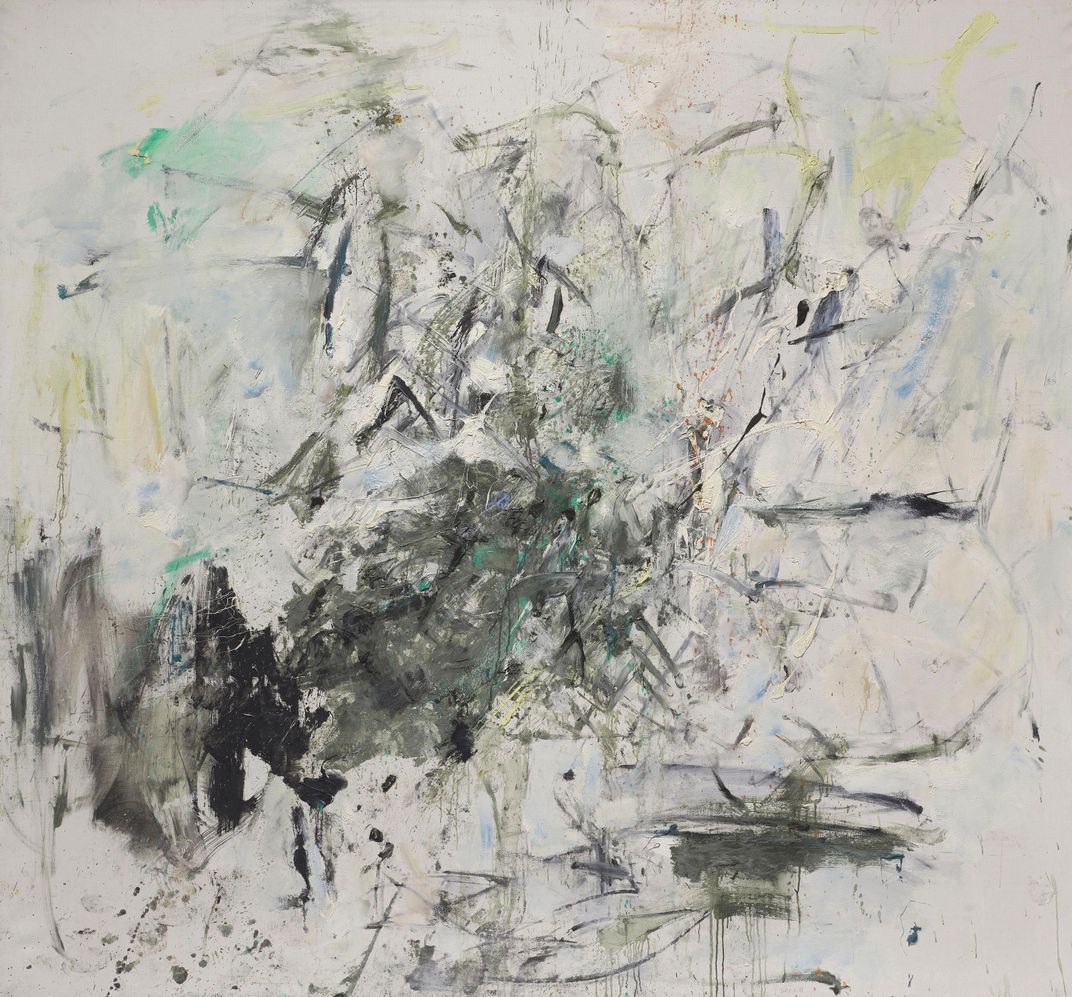Sweeping Survey Unites Works by 100 Women Artists of the Past Century
An ongoing exhibition at the Museum of Fine Arts, Boston, features 200 paintings, sculptures, ceramics and more
:focal(396x194:397x195)/https://tf-cmsv2-smithsonianmag-media.s3.amazonaws.com/filer/2a/51/2a515071-a384-466f-8ef9-0bc4957342d2/fads.jpg)
Grace Hartigan’s 1945 painting Masquerade depicts a crowd of angular figures dancing and enjoying a celebration. The American artist’s confident brushstrokes imbue the scene with a frenzied energy accentuated by vibrant bursts of color.
Though Hartigan was one of the most well-respected abstract painters of the 20th century, she and other female artists seldom get their due in major museums: As a 2019 investigation conducted by artnet News and In Other Words found, works by women represented just 11 percent of acquisitions and 14 percent of exhibitions at 26 American cultural institutions between 2008 and 2018.
“Women Take the Floor,” an ongoing exhibition at the Museum of Fine Arts, Boston (MFA), seeks to help correct this imbalance. Masquerade is one of around 200 works featured in the sweeping survey, which includes paintings, prints, jewelry, textiles, photographs and ceramics by more than 100 female artists. A virtual tour of the exhibition is available to peruse online.
“When you walk into the gallery, I wanted you to be confronted by a bunch of women looking at you,” curator Nonie Gadsden tells the Guardian’s Nadja Sayej. “I wanted you to know this is something different.”
Per a statement, the creative “takeover”—which occupies seven galleries on the museum’s third floor—strives to challenge the dominant narrative of art between 1920 and 2020. One section focuses on women artists of the 1920s and ’30s, like Georgia O’Keeffe and Hopi-Tewa potter Nampeyo, while another is dedicated to pioneering action painters of the mid-20th century, such as Elaine de Kooning and Lee Krasner. A third, titled “Women Depicting Women: Her Vision, Her Voice,” showcases female artists’ portraits of other women.
Gadsden and her colleagues made sure to include a diverse roster of female creators in “Women Take the Floor.” The show also features artists working in a wide variety of disciplines, from sculptor Katherine Lane Weems to feminist photographer Cindy Sherman to the acclaimed painter Frida Kahlo.
One exhibition highlight is Kahlo’s Dos Mujeres (Salvadora y Herminia) (1928). The painting, which is the first one Kahlo ever sold, depicts two sisters sitting next to one another. The woman seated closest to the viewer wears a blue dress adorned with a white scalloped collar, while the other dons a leafy green ensemble that matches the foliage-covered backdrop behind her.
“Kahlo gazed at Salvadora and Herminia from her educated, middle-class perspective,” writes the museum in the virtual exhibition. “However, her experiences with disability, cultural tensions within her family, and romantic relationships with both men and women influence her artistic explorations of personal identities and social inequities throughout her artistic career.”
Other pieces in the show, like She (1992) by Lorna Simpson, similarly question the meaning of personal identity, particularly as it relates to concepts of masculinity and femininity. Though the photographic series’ title indicates that its subject is a woman, the individual’s appearance and posture could be interpreted otherwise: As Julianne McShane wrote for the New York Times last year, “[T]he four photographs crop out the face of the model, whose brown suit and body language—spread legs and hands splayed across the upper thighs—suggest the sitter is a man.”
In addition to spotlighting female artists of the 20th century, the show turns a critical lens on the MFA’s own role in perpetuating the art world’s male-dominated bent. As Murray Whyte reported for the Boston Globe in September 2019, women constituted just 8 percent of the museum’s collection at the time.
And, though the MFA has included works by female artists in its collection since its establishment in 1870, such pieces only comprised five percent of the museum’s acquisitions over the past decade, according to the Times.
Ahead of the exhibition’s opening in 2019, curators expressed hopes that it would offer the museum an opportunity to redress this underrepresentation and highlight female artists in an institutional setting.
“It’s very much a work in progress,” Gadsden tells the Guardian. “We are trying to not let it go back to what it was.
She adds, “If you’re going to show a Jackson Pollock painting, show a Joan Mitchell painting with it—or just show Joan Mitchell instead. This exhibition says, ‘If these artists have the strength to do what they did, I can do my thing too.’”
“Women Take the Floor” is on view at the Museum of Fine Arts, Boston, through November 28.
/https://tf-cmsv2-smithsonianmag-media.s3.amazonaws.com/accounts/headshot/Isis_Davis-Marks_thumbnail.png)

/https://tf-cmsv2-smithsonianmag-media.s3.amazonaws.com/filer/41/1a/411a4fbb-eef0-4256-8bb7-69acbe14eac4/13mfa-women4-superjumbo.jpeg)
/https://tf-cmsv2-smithsonianmag-media.s3.amazonaws.com/filer/7d/a1/7da12ae8-25a7-46eb-aa11-392fdcf460d7/wojkgdw2eqi6tp66lm5d3bh6qu.jpeg)


/https://tf-cmsv2-smithsonianmag-media.s3.amazonaws.com/accounts/headshot/Isis_Davis-Marks_thumbnail.png)